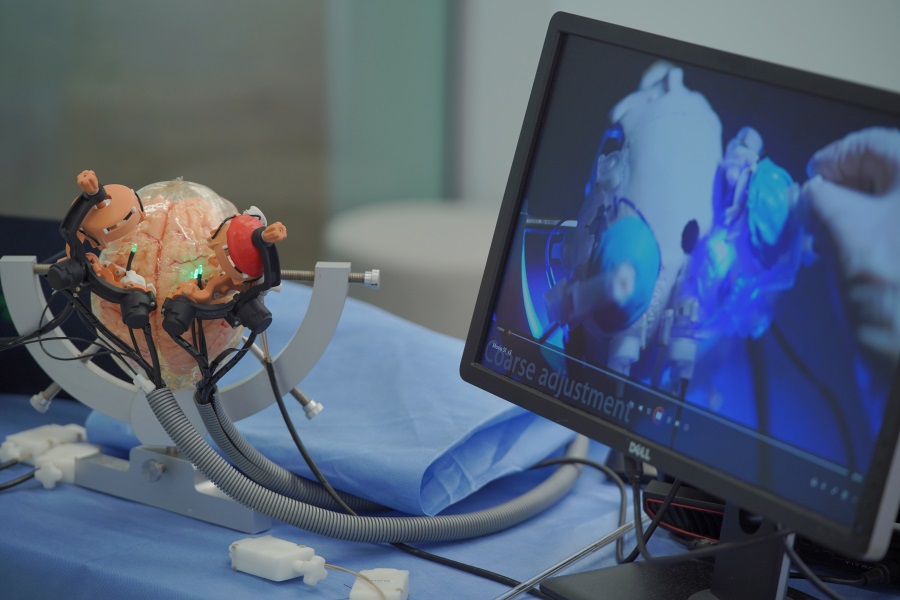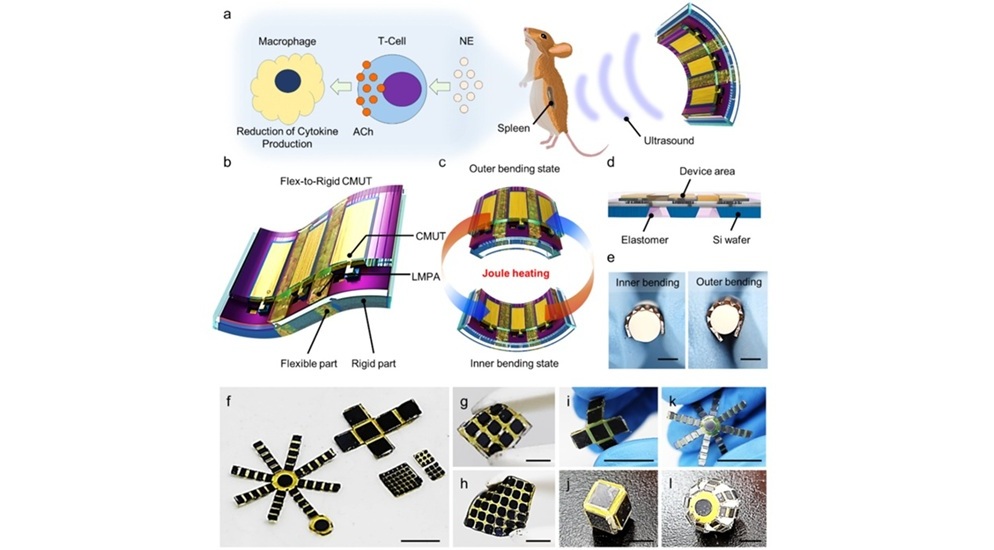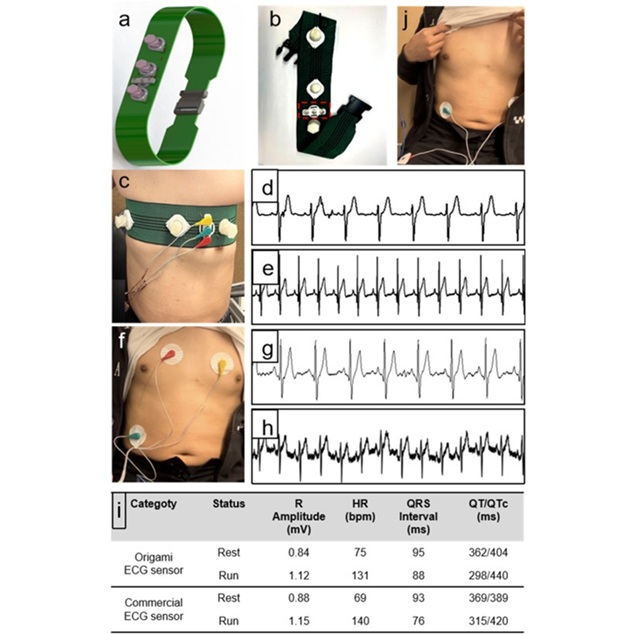MRI-Guided Multi-Stage Robotic Positioner Enhances Stereotactic Neurosurgery Precision 
|
By HospiMedica International staff writers Posted on 30 May 2024 |

Magnetic resonance imaging (MRI) offers significant benefits in neurosurgery, providing detailed 3D visualizations of neurovascular structures and tumors. Traditionally, its use has been restricted to analyzing static images taken before or after surgery, leading to potential inaccuracies due to the setup of stereotactic frames, image registration, and brain shifts. Researchers have now developed a specialized interactive multi-stage robotic positioner for use in MRI-guided stereotactic neurosurgery, enhancing the precision of these surgical interventions.
This advanced system developed by a team from the University of Hong Kong (HKU, Pokfulam, Hong Kong) is designed to assist in various procedures such as cannula or needle targeting, which are crucial in treatments like deep brain stimulation (DBS) for movement disorders including Parkinson’s disease. Additionally, it supports a variety of therapeutic interventions like biopsy, drug delivery, ablation, and catheter placement into deep brain areas. In 2018, this team successfully developed the world’s first robotic system capable of conducting bilateral stereotactic neurosurgery within an MRI setting, which helped overcome challenges associated with lengthy procedures and complex workflows. The initial prototype has since been refined by the team.
The latest version of this system facilitates interactive, semi-automatic manipulation in two stages. Initially, based on pre-operative images, the surgeon positions the robotic instrument guide towards the target trajectory. The system incorporates fiber-optic lighting to visually indicate any angulation errors relative to the target trajectory. When the instrument guide is aligned within 5 degrees of the target, it can be remotely locked in place. The system uses finite element analysis (FEA) for design optimization and employs a fluid-driven soft actuator architecture to position the instrument with an orientation error of less than 0.2 degrees. Orientation locking is robust, utilizing soft robotic mechanisms such as tendon-driven baking units and granular jamming.
Following this setup, the surgeon manually inserts the instrument through the robot-guided pathway, with an insertion stopper aiding in setting the precise depth. This technology helps eliminate the inherent errors found in traditional frame-based stereotaxy, thus enhancing insertion accuracy and improving surgical outcomes. It also reduces the duration of the operation, which contributes to greater patient comfort and satisfaction. The device itself is compact and lightweight (97 x 81 mm, 203g), designed to be compatible with most standard imaging head coils. It includes custom-made miniature wireless omnidirectional tracking markers and a zero-electromagnetic-interference system to support accurate robot registration under real-time MRI conditions. The system's effectiveness has been confirmed through cadaveric studies and skull model testing, achieving a precision error of less than 3 mm and showing significant potential for future clinical application.
Related Links:
University of Hong Kong
Latest Surgical Techniques News
- Novel Endoscopy Technique Provides Access to Deep Lung Tumors
- New Study Findings Could Halve Number of Stent Procedures
- Breakthrough Surgical Device Redefines Hip Arthroscopy
- Automated System Enables Real-Time "Molecular Pathology" During Cancer Surgery
- Groundbreaking Procedure Combines New Treatments for Liver Tumors
- Ablation Reduces Stroke Risk Associated with Atrial Fibrillation
- Optical Tracking Method Identifies Target Areas in Robot-Assisted Neurosurgery
- General Anesthesia Improves Post-Surgery Outcomes for Acute Stroke Patients
- Drug-Coated Balloons Can Replace Stents Even in Larger Coronary Arteries
- Magnetic Kidney Stone Retrieval Device Outperforms Ureteroscopic Laser Lithotripsy
- Absorbable Skull Device Could Replace Traditional Metal Implants Used After Brain Surgery
- Magic Silicone Liquid Powered Robots Perform MIS in Narrow Cavities
- 'Lab-on-a-Scalpel' Provides Real-Time Surgical Insights for POC Diagnostics in OR
- Biodegradable Brain Implant Prevents Glioblastoma Recurrence
- Tiny 3D Printer Reconstructs Tissues During Vocal Cord Surgery
- Minimally Invasive Procedure for Aortic Valve Disease Has Similar Outcomes as Surgery
Channels
Critical Care
view channel
Nanogel Technology Almost 100% Effective in Destroying Drug-Resistant Bacteria Within Hours
Antibiotic resistance is one of the most serious global health threats, driven by bacteria that evade treatment and form protective biofilms that shield them from drugs. Pathogens such as Pseudomonas aeruginosa,... Read more
Wearable Ultrasound Sensor Delivers Noninvasive Treatment Without Surgery
Wearable ultrasound devices have long struggled with low acoustic power and poor structural stability, limiting their use in high-resolution imaging and therapeutic applications. Conventional flexible... Read morePatient Care
view channel
Revolutionary Automatic IV-Line Flushing Device to Enhance Infusion Care
More than 80% of in-hospital patients receive intravenous (IV) therapy. Every dose of IV medicine delivered in a small volume (<250 mL) infusion bag should be followed by subsequent flushing to ensure... Read more
VR Training Tool Combats Contamination of Portable Medical Equipment
Healthcare-associated infections (HAIs) impact one in every 31 patients, cause nearly 100,000 deaths each year, and cost USD 28.4 billion in direct medical expenses. Notably, up to 75% of these infections... Read more
Portable Biosensor Platform to Reduce Hospital-Acquired Infections
Approximately 4 million patients in the European Union acquire healthcare-associated infections (HAIs) or nosocomial infections each year, with around 37,000 deaths directly resulting from these infections,... Read moreFirst-Of-Its-Kind Portable Germicidal Light Technology Disinfects High-Touch Clinical Surfaces in Seconds
Reducing healthcare-acquired infections (HAIs) remains a pressing issue within global healthcare systems. In the United States alone, 1.7 million patients contract HAIs annually, leading to approximately... Read moreHealth IT
view channel
EMR-Based Tool Predicts Graft Failure After Kidney Transplant
Kidney transplantation offers patients with end-stage kidney disease longer survival and better quality of life than dialysis, yet graft failure remains a major challenge. Although a successful transplant... Read more
Printable Molecule-Selective Nanoparticles Enable Mass Production of Wearable Biosensors
The future of medicine is likely to focus on the personalization of healthcare—understanding exactly what an individual requires and delivering the appropriate combination of nutrients, metabolites, and... Read moreBusiness
view channel
Philips and Masimo Partner to Advance Patient Monitoring Measurement Technologies
Royal Philips (Amsterdam, Netherlands) and Masimo (Irvine, California, USA) have renewed their multi-year strategic collaboration, combining Philips’ expertise in patient monitoring with Masimo’s noninvasive... Read more
B. Braun Acquires Digital Microsurgery Company True Digital Surgery
The high-end microsurgery market in neurosurgery, spine, and ENT is undergoing a significant transformation. Traditional analog microscopes are giving way to digital exoscopes, which provide improved visualization,... Read more
CMEF 2025 to Promote Holistic and High-Quality Development of Medical and Health Industry
The 92nd China International Medical Equipment Fair (CMEF 2025) Autumn Exhibition is scheduled to be held from September 26 to 29 at the China Import and Export Fair Complex (Canton Fair Complex) in Guangzhou.... Read more















